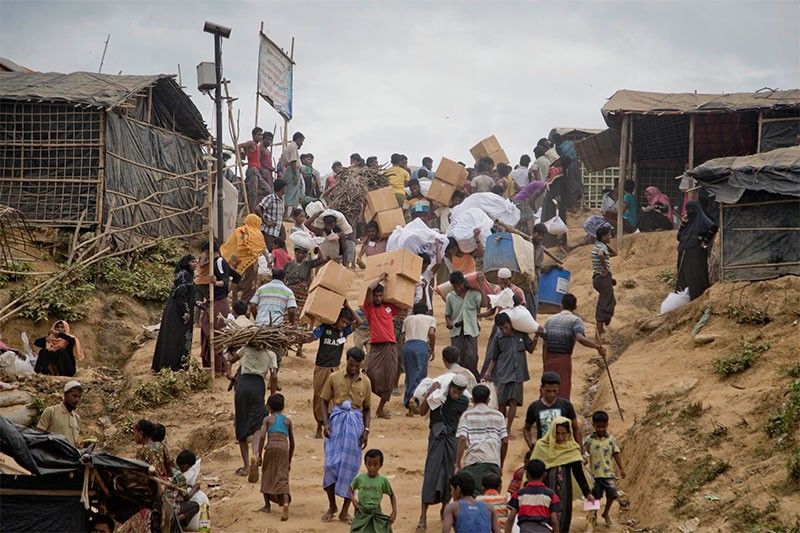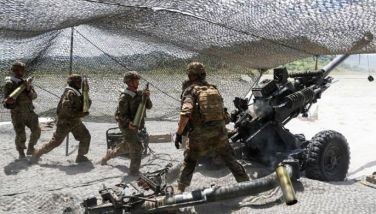How ASEAN can contribute to Indo-Pacific in 2018

(APPFI commentary) The Indo-Pacific, as a geopolitical concept, was first coined in 2007 by Gurpreet Khurana in an article published by Strategic Analyses. Referring to the strategic and political space covered by the Indian and Pacific Oceans, the term has since been used in speeches by Japan’s Prime Minister Shinzo Abe in 2007 and US President Donald Trump in 2017. Australia’s 2012 White Paper on the Asian Century applies the concept extensively. The concept of an "Indo-Pacific" thus vacillates between that of a geographical idea and a strategic area. Wedged between the two oceans, Southeast Asia naturally plays a critical role in Indo-Pacific security.
ASEAN celebrated 50 years of its formation in 2017 in the midst of reminiscence of how the organization has grown. Whereas the usefulness of ASEAN continues to be debated, it is quite clear that an Indo-Pacific without ASEAN will not be any better. So how can ASEAN contribute to the Indo-Pacific in 2018? This paper focuses on the agenda of the 2018 ASEAN chair and relates the goals to broader Indo-Pacific affairs. It also discusses what more needs to be done by ASEAN.
ASEAN 2018: Resilience and innovation
The themes of ASEAN under Singapore’s Chairmanship are resilience and innovation. During a media conference, Singapore’s Foreign Minister Vivian Balakrishnan described the region as “undergoing a transition into a multipolar world”, where “a digital revolution is occurring”. He goes on to say that “it’s a time where there is anxiety about jobs, and therefore even the global consensus on free trade is being frayed; and it is also a time when we are all collectively confronting unconventional trans-boundary threats, including terrorism, cybercrime, and climate change”. To overcome these challenges, ASEAN needs to build resilience to withstand these threats through innovative ways.
By resilience, Balakrishnan refers to the ability of ASEAN to stand together and offer assistance to member countries that are facing crisis. The support from ASEAN will not only build confidence among member countries, but also develop unity within ASEAN. The focus on innovation is an acknowledgment that the digital revolution will have an impact on jobs and economic development in the region. The digital revolution brings about opportunities as well as disruptions to ASEAN. Therefore, the association needs to prepare collectively and individually to train the population and build infrastructure that will harness the potential of the digital age.
In response to current Indo-Pacific developments, ASEAN aims to settle the negotiations of the Regional Comprehensive Economic Partnership (RCEP) by 2018. ASEAN will also begin formal negotiations on the Code of Conduct (COC) for the South China Sea. Since January 2018, ASEAN has partially begun the ASEAN Single Window, which facilitates trade within an integrated Southeast Asia. It will launch the ASEAN Smart Cities Network that will facilitate the exchange of best practices, as well as connect start-ups and enterprises within ASEAN and with external partners. In the midst of the digital revolution and economic integration, ASEAN will also deepen cooperation in cybersecurity.
As an institution that promotes free trade, RCEP involves ASEAN and six of its dialogue partners, including Indo-Pacific countries such as China, India and Japan. Once concluded, RCEP will become the biggest free trade agreement and free trade area in the world. ASEAN is at the hub of this grouping of trading partners and provides a market of 630 million people, with a relatively young workforce. The establishment of RCEP will buck the trend of declining commitment to free trade among some leaders in Europe and the United States. The ASEAN Single Window and the Smart Cities Network will enhance economic integration further.
The economic integration of the Indo-Pacific has a direct impact on the region’s security. If ASEAN is able to create and develop RCEP into a robust free trade area, the economic interdependence among the 16 countries will provide incentives for intra-mural disagreements to be resolved swiftly, peacefully and amicably. On the surface, the South China Sea disputes are currently in a state of calm, making it conducive for the negotiation of the COC. Although ASEAN and China are keen to complete the COC negotiations in good time, there are underlying challenges that prevent the two sides from an expeditious conclusion. First, China’s island-building, which violates the UNCLOS, has not stopped. Intentions to commence joint resource management among claimants in the disputed waters, such as fishery and the protection of marine biodiversity, have also not made meaningful progress. One positive step ahead would be the ASEAN-China Maritime Exercise that will be conducted in 2018.
Another crisis that escalated in the past year is the Rohingya refugee crisis. Rooted in history, the issue is made complex because of factors relating to religion, politics and violence. So far, Myanmar and Bangladesh have signed two agreements for the repatriation of the refugees, but practical difficulties persist. ASEAN will not have the capacity to make any significant contribution to the resolution. What ASEAN members can do, however, is to assist at a bilateral level, while preserving the norm of non-interference with Myanmar’s domestic affairs. Balakrishnan cautioned that the situation in the Rakhine State could be in danger of being exploited by violent extremists, culminating in something similar to what happened in Marawi in 2017.
The common and immediate risk faced by ASEAN comes from transnational terrorist threats. Despite the cessation of the Marawi siege by a group that claims affinity with the Islamic State last year, terrorism continues to threaten the way of life among populations in the region. During the February 2018 ADMM retreat, ASEAN defense ministers demonstrated commitment to joint counter-terrorism efforts through an agreement on a strategic framework of resilience, response, and recover.
Where is ASEAN in the Indo-Pacific?
Under the Chairmanship of Singapore, ASEAN looks to adopt a forward-looking agenda. In contrast with previous years, where ASEAN’s agenda focused predominantly on topical issues, such as the South China Sea, the Association aims to build strong foundations to meet the future challenges.
Economically, ASEAN will be able to connect the markets among the six non-ASEAN RCEP partners. By tapping into innovative technology to bring about economic growth, ASEAN can close the gap between the advanced ASEAN economies and those that lag behind. An integrated ASEAN that is well-connected digitally can exchange best practices with other members of RCEP.
Politically, a resilient ASEAN, characterized by its unity, will make the group relevant to external partners and central to regional developments. ASEAN can continue to play the role of an honest broker for crises in the Korean Peninsula by hosting the ASEAN Regional Forum (ARF). Unless there are renewed efforts to engage Pyongyang in other multilateral dialogues, the ARF remains the only platform to negotiate with the North Koreans.
Finally, to conclude, the concept of ASEAN, as a collective voice for a diverse and insecure region, will outlast the difficulties members face in staying together. Despite the differences among members that periodically threaten to break up the group, Southeast Asian states are not offered any good alternatives to ASEAN if they hope to navigate the multipolar world of competing interests. From statements made by leaders of China and the United States during previous ASEAN Summits, it is clear that ASEAN members and major powers recognise that a strong ASEAN is important for the stability of the Indo-Pacific. Still, there is much work that needs to be done for ASEAN to grow.
RELATED VIDEO:
***
Daniel Chua Wei Boon is an assistant professor with the Maritime Security Programme at the Institute of Defence and Strategic Studies, at the S. Rajaratnam School of International Studies Nanyang Technological University, Singapore. He is also the deputy head of Graduate Studies and Coordinator of the Asia Pacific Programme for Senior Military Officers.
- Latest





























